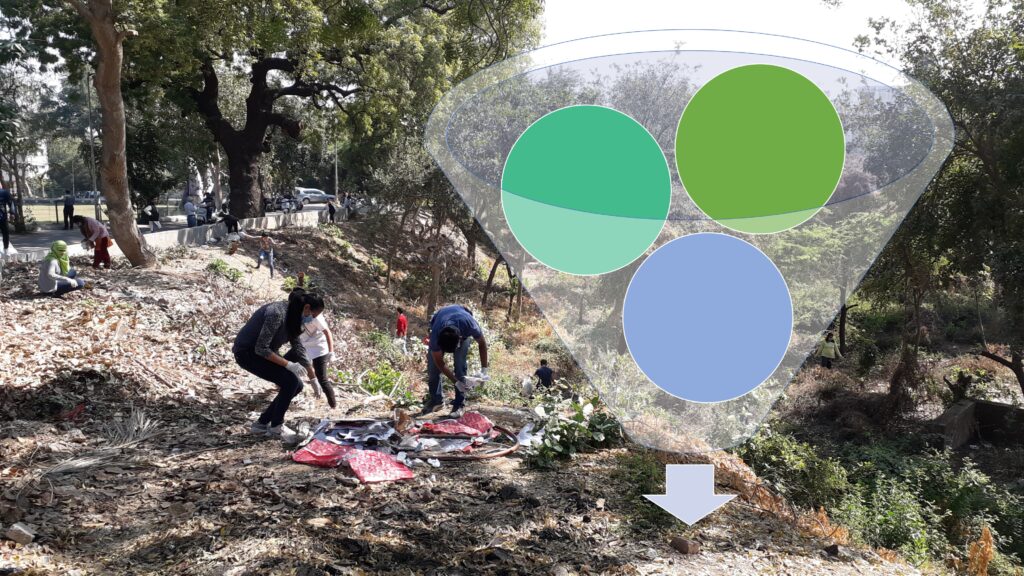
COMPETITIVE EXAM MCQs SERIES of ENVIRONMENTAL SCIENCE for UGC-NET/JRF, SLET, ARS, GATE, and other entrance tests – Solid Waste Processing and Recovery.
Syllabus Outline
- Techniques for size reduction: shredding, grinding, and milling.
- Separation methods: screening, air classification, magnetic separation.
- Compaction and baling of waste materials.
- Chemical treatment methods: chemical precipitation, oxidation, and neutralization.
- Processes for resource recovery: pyrolysis, gasification, and plasma arc technology.
- Composting: principles, methods, and process parameters.
- Anaerobic digestion: stages, reactor types, and biogas production.
- Vermicomposting and other biological treatment methods.
- Incineration: principles, types of incinerators, and operational considerations.
- Processes for recycling various materials: paper, plastics, metals, glass.
- Recovery of valuable materials: metals, nutrients, and chemicals.
- Production of refuse-derived fuel and its applications.
This quiz contains the concept-based most frequently asked 25 MCQs of “Solid Waste Processing and Recovery“. Each question has a single correct/most appropriate answer.
*****
1. Standards of processing and treatment of solid waste in India are included under:
a) Schedule I of Solid Waste Management Rules, 2016
b) Schedule II of Solid Waste Management Rules, 2016
c) Schedule I of Solid Wastes (Management & Handling) Rules, 2000
d) Schedule III of Solid Waste Management Rules, 2016
2. What is the primary focus of the Swachh Bharat Mission, India regarding the management of segregated fractions of waste?
a) Waste Incineration
b) Waste Landfilling
c) Waste Recycling
d) Waste Processing and Recovery
3. Which method is not a chemical treatment process?
a) Incineration
b) Ion-exchange
c) Oxidation-reduction
d) Solidification
4. Which of the following methods are used to reduce the volume of municipal solid waste?
a) Shredding and Pulverization
b) Segregation and compositing
c) Segregation and Pulverization
d) Compaction and land-filling
5. Which of the following can be recycled several times?
a) Plastic
b) Wood
c) Iron
d) Cloth
6. Wastes segregated at source are collected and further separated and processed at:
a) Materials recovery facilities site
b) Land-fill site
c) Transfer station
d) RDF combustor facilities site
7. What is the best practice to manage used oil?
a) Disposal in a landfill
b) Burning on-site
c) Disposal to a liquid effluent treatment system
d) On-site secondary use such as a machinery lubricant or dust suppressant
8. What is the most appropriate waste management strategy for solid waste containing a high percentage of food scraps?
a) Landfilling with energy recovery.
b) Incineration with flue gas treatment.
c) Large-scale composting for organic fertilizer.
d) Densification and refuse-derived fuel production.
9. Which method is most often used for ferrous materials separation from municipal solid waste?
a) Air classification
b) Magnetic separation
c) Screening
d) Flotation
10. Which process can convert organic waste into biogas through anaerobic digestion?
a) Pyrolysis
b) Composting
c) Incineration
d) Methanogenesis
11. What is the typical temperature range for thermophilic composting?
a) 15-30°C
b) 30-45°C
c) 45-60°C
d) 60-75°C
12. Which of the following is not a component of refuse-derived fuel?
a) Plastics
b) Metals
c) Paper
d) Wood
13. Which gas is primarily produced during the anaerobic digestion of organic solid waste?
a) Carbon dioxide
b) Methane
c) Nitrogen
d) Hydrogen sulfide
14. What is the main product of the pyrolysis of organic waste?
a) Char
b) Ash
c) Compost
d) Sludge
15. Which technology is used to treat hazardous components in solid waste?
a) Plasma arc gasification
b) Composting
c) Vermicomposting
d) Mechanical biological treatment
16. What is the key environmental concern associated with solid waste incineration?
a) Noise pollution
b) Air pollution
c) Water pollution
d) Soil contamination
17. Which equipment can significantly separate paper from other waste materials?
a) Trommel screen
b) Eddy’s current separator
c) Air classifier
d) Optical sorter
18. What is the main disadvantage of mechanical biological treatment?
a) High operational cost
b) Production of methane
c) Requirement of large land area
d) Generation of toxic leachate
19. In vermicomposting, which species of earthworm is commonly used?
a) Lumbricus terrestris
b) Eisenia fetida
c) Pheretima posthuma
d) Aporrectodea caliginosa
20. What is the function of a trommel screen in solid waste processing?
a) To sort waste by size
b) To separate metals
c) To compact waste
d) To burn waste
21. Which of the following is an advantage of anaerobic digestion over composting?
a) Faster processing time
b) Higher energy recovery
c) Less odour production
d) Lower capital cost
22. What is the primary role of bulking agents in composting?
a) To provide nutrients
b) To improve aeration
c) To increase moisture content
d) To enhance microbial activity
23. What is leachate?
a) A gas produced from waste
b) A liquid that drains from waste
c) A solid residue from waste
d) A type of recyclable material
24. Which gas is commonly produced in a sanitary landfill?
a) Nitrogen
b) Methane
c) Oxygen
d) Carbon monoxide
25. Which waste treatment method can lead to the production of dioxins and furans?
a) Incineration
b) Composting
c) Anaerobic digestion
d) Mechanical separation
*****
Previous: Solid Waste Collection and Transportation
Next: Electrical Energy from Solid Waste
References
- Kreith, F. & Tchobanoglous, G. (2002) Handbook of Solid Waste Management, McGraw-Hill, 2nd edition.
- Agarwal, S.K. (2005) Solid Waste Management, APH Publishing Corporation, 1st edition.
- Rao, M.N. & Sultana, M. (2013) Solid and Hazardous Waste Management, B.S. Publications, 1st edition.

